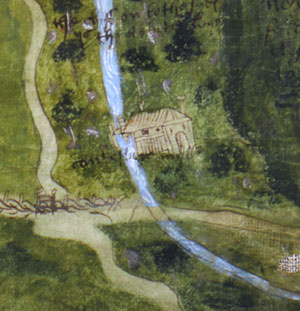 |
 |
 |
 |
 |
 |
 |
|
How did the community acquire its lands and possessions? (3/7)
The abbey acquired lands and possessions in a number of ways. The community attracted donations from those who were impressed by the sanctity of the monks and wished to receive spiritual benefits, such as masses and prayers, in return for their gift. It was not uncommon for donors to grant land or rights along with their corpse for burial: in 1241 Idonea of Vipont, the heiress of the founder, Richard de Busli, left her body to be buried at the abbey and bequeathed Sandbeck to the monks; Jeremiah, parson of Rossington, gave all his meadows in South Wood, Armthorpe, along with his corpse, to the monks of Roche. Whilst some acquisitions were given at the donor’s initiative, others were actively sought by the community. In 1348 the monks petitioned parliament that they might receive oak from the woods of Hatfield every year and that instead of the tithe of herbage which they were accustomed to receive from here, they be allowed sixty large beasts to run in the park or wood during the year. Some holdings were purchased by the community. For the sum of £200 the monks acquired from Robert de Ripariis rights in certain lands and tenements in Slade Hooten, Walkeringham, Wadworth, Alverley and Loversall, as well as Robert’s wood and a field in Wadworth, his mills with ponds and watercourses, and all suits of mills in these villages.
There were problems not simply in acquiring lands and rights but in retaining them; the monks were sometimes drawn into legal disputes which could be time-consuming and expensive. In 1310 the abbots of Roche and Whalley clashed over tithes from their possessions in Hillingthorpe, Lancashire. After the case was referred to the General Chapter, the abbots of Rievaulx and Buildwas were appointed as arbiters and they decided that the abbot of Roche should pay the abbot of Whalley an annual sum of 40p silver, as well as a pound of wax and a pound of frankincense for the tithes of all lands cultivated and pertaining to Hillingthorpe. |
